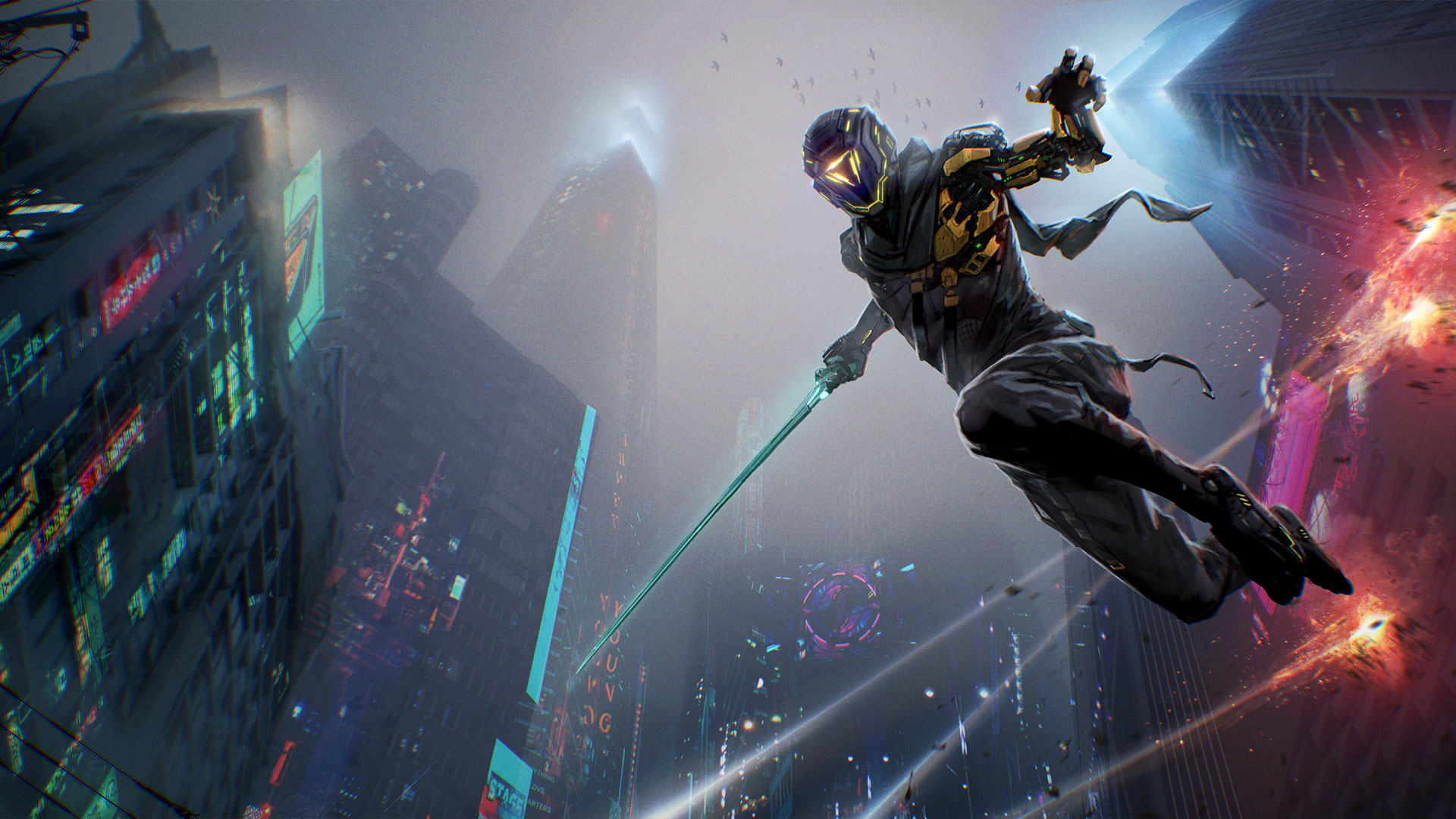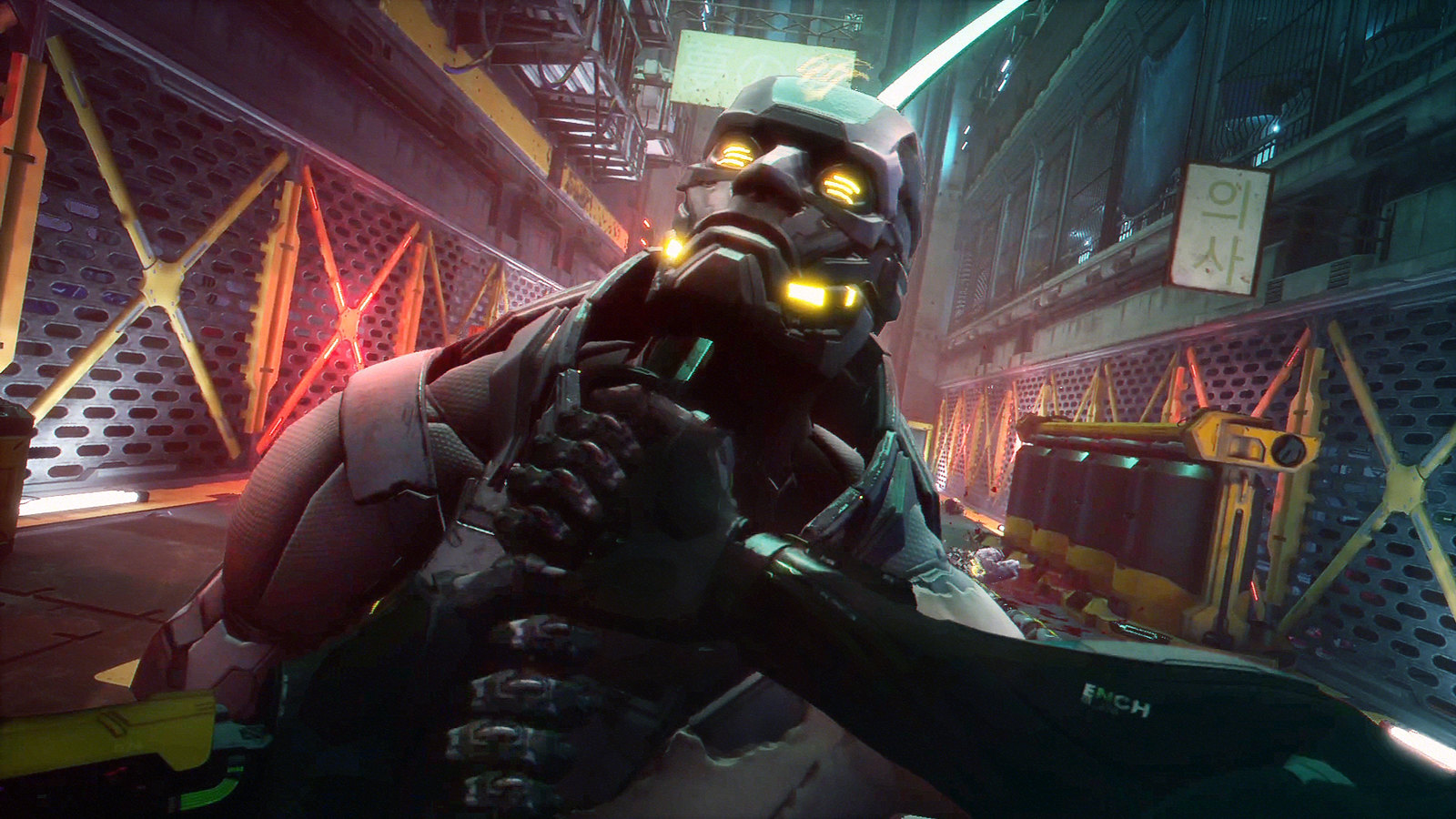Ghostrunner was released back in 2020 from co-developers One More Level and Slipgate Ironworks and was generally lauded for its fast-paced parkour action, setting, and difficulty. Now three years later, One More Level decided to give it a go on their own this time, as Ghostrunner 2 looks to build on everything people loved about the first game with an even better sequel.
Danger Around Every Corner
Ghostrunner 2 picks up after the events of the first game where the Keymaster was destroyed, putting you once again in control of the Ghostrunner himself whom we learned was named Jack at the end of the first game. Now that Dharma Tower and everyone within it is seemingly free, an AI-based cult has formed outside of the tower and is trying to take advantage of the fall of the Keymaster by taking over themselves and killing anyone that stands in their way. The story is quite interesting as Jack investigates this cult and its members, which leads to some very intriguing twists that are best experienced for the first time while playing rather than being spoiled here.
Jack starts off the game within Dharma Tower where its cyberpunk setting looks bigger and better than ever. The neon lights shine bright as you explore the innards of the city before eventually breaking outside and traveling in the more dystopian desolate landscape outside of Dharma Tower. Visuals for each location are pretty impressive, whether it’s a large-scale area, the cyberspace sections, or just looking at the level of detail put into the environment in each Dharma Tower building, even if many can look pretty similar to one another.
Like the original, parkour is at the center of the action in Ghostrunner 2 as you go through the game’s 18-level story campaign. This starts off as simply wall-running but quickly elevates into much more as you reach more complicated areas that require using your Sensory Boost ability from the first game and grappling hook to make it across. That is far from all though, as you get other upgrades that are used in tandem with the environment, such as using shurikens to create targets that you can use your grappling hook on and even a wingsuit later in the game that completely reshapes traversal from that point forward.
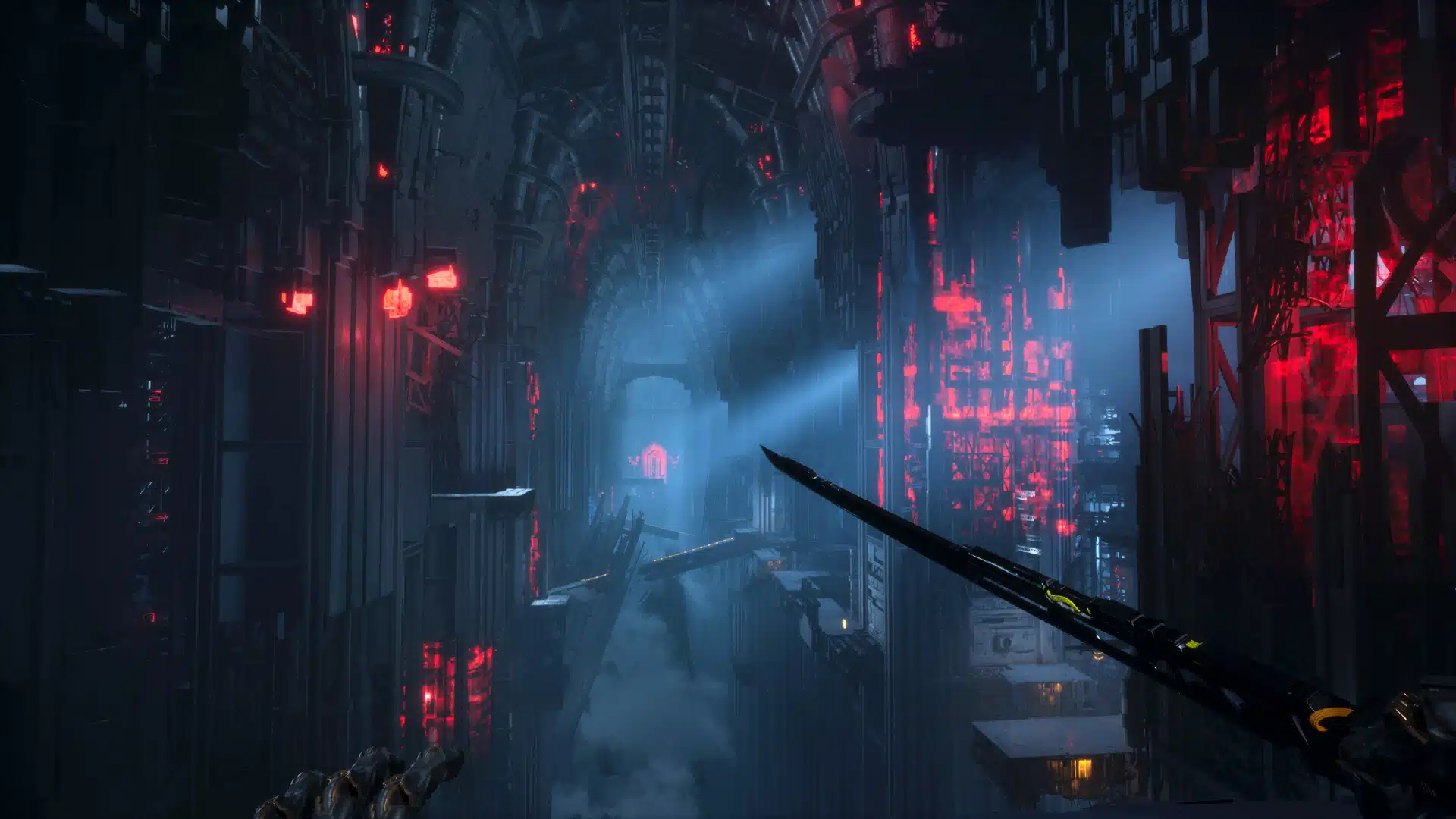
Regardless of which point of the game you’re in, the movement almost always feels very fluid to where you usually feel like it is your fault that you end up dying rather than the fault of the game. This was even more evident in the cyberspace sections where you would be moving between numerous in-air platforms one after the other until you make it to the next standing platform. There are many games where poor frame rate and level design can cause you to die, but your deaths in Ghostrunner 2 are typically a result of the timing that you will have to master rather than any performance issues with the game. That is really one of the very core elements of the game too, as you are meant to learn from your mistakes and try, try, and try again.
As to be expected from a sequel, you will be dying a lot. Ghostrunner’s DNA already felt ingrained in games like Hotline Miami, where you would continually die until you correctly learn patterns to advance further, complete with almost instantaneous restarts. The first Ghostrunner was like this and now Ghostrunner 2 is exactly the same. As soon as you die, the game quickly jumps to the death screen and allows you to restart with one press of a button.
There are no long loading sequences after death here, at least on the PlayStation 5 version, which allows you to jump right back into the action and possibly die once again. Some points of the game will definitely test your patience as you die again and again, but that is part of the gameplay here that somehow still manages to work very well. Trial and error is something that rarely works in a game as it can frustrate the player, but this series is actually built around it and manages to execute it somehow.
The checkpoint system found in Ghostrunner 2 is also quite fair, which could have really ruined the game if it was not. With as often as you will be dying in this game, not being sent back very far is a very welcome sight upon respawning. This could have gotten especially cruel during the multi-part boss battles that will test your skills to the max. Having a few checkpoints during these boss fights actually allows you to be a little riskier with your tactics and have a lot of fun while still also probably dying countless times along the way.
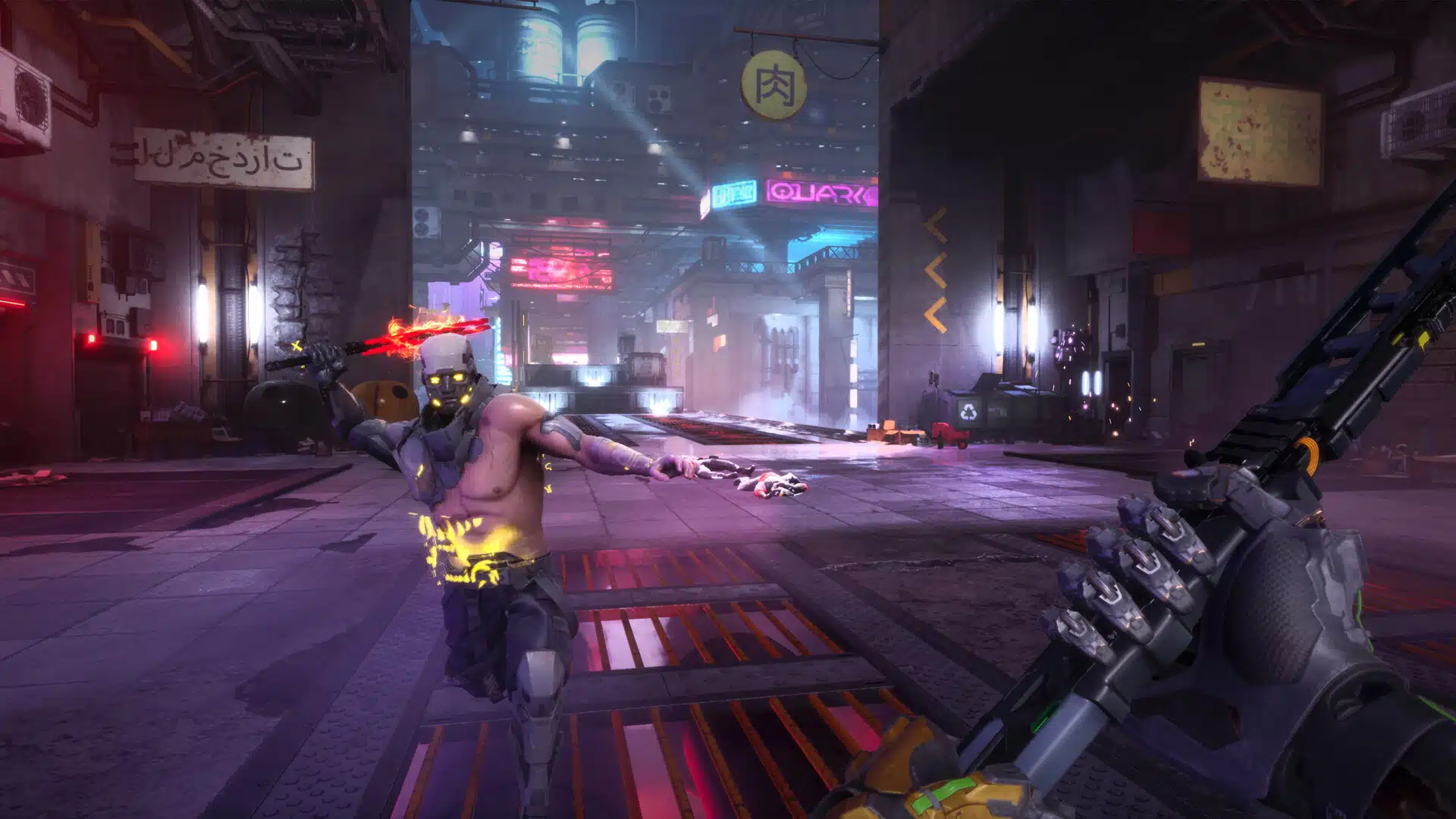
Dying in Ghostrunner 2 comes occasionally from the platforming itself, but more often than not comes from the lightning-speed combat. This is because Jack is very vulnerable to attack, once again dying after only one hit. This means that you can’t just run in and expect to tank damage and take out hordes of enemies. Instead, you have to be much more methodical in your tactics and the game’s quick respawn system plays well into this.
Jack always has his trusty katana with him that he can use to attack with one button and block with another, which are your only combat moves at the start of the game. For anyone who did not play the first game, the combat itself can take some getting used to due to the first-person perspective that is rare in a game with combat like this. This often leaves you open to surprise attacks in your blind spot, so you have to almost have the block button held or ready to be held as you are making your way through a level for the first time.
The block button is also vital to your survival by being able to parry and deflect enemy attacks. By pressing block just as an enemy is about to hit you, it will in turn kill the enemy in one hit instead. If the enemy shoots projectiles, you can also deflect them back by timing your block in the same manner. This is something that becomes core to the gameplay and it’s very hard to survive without utilizing it in many areas. However, the game’s final boss fight changes the way the parry system is handled, which was a very poor idea in my opinion. The timing here led to many deaths that were unnecessary and turned what was really not that hard of a boss fight into one that was infuriating after a while. If the game had not had multiple checkpoints during this fight, I could see many people just up and quitting during that very fight.
As for the regular enemies in the game, there are several different kinds that you will come across and have to learn how to defeat. Some are basic enemies that use melee attacks, while others use projectiles or other types of weapons. Learning which enemies are best to target first is all part of the learning experience, which is something you’ll need to take advantage of to survive in the long term.
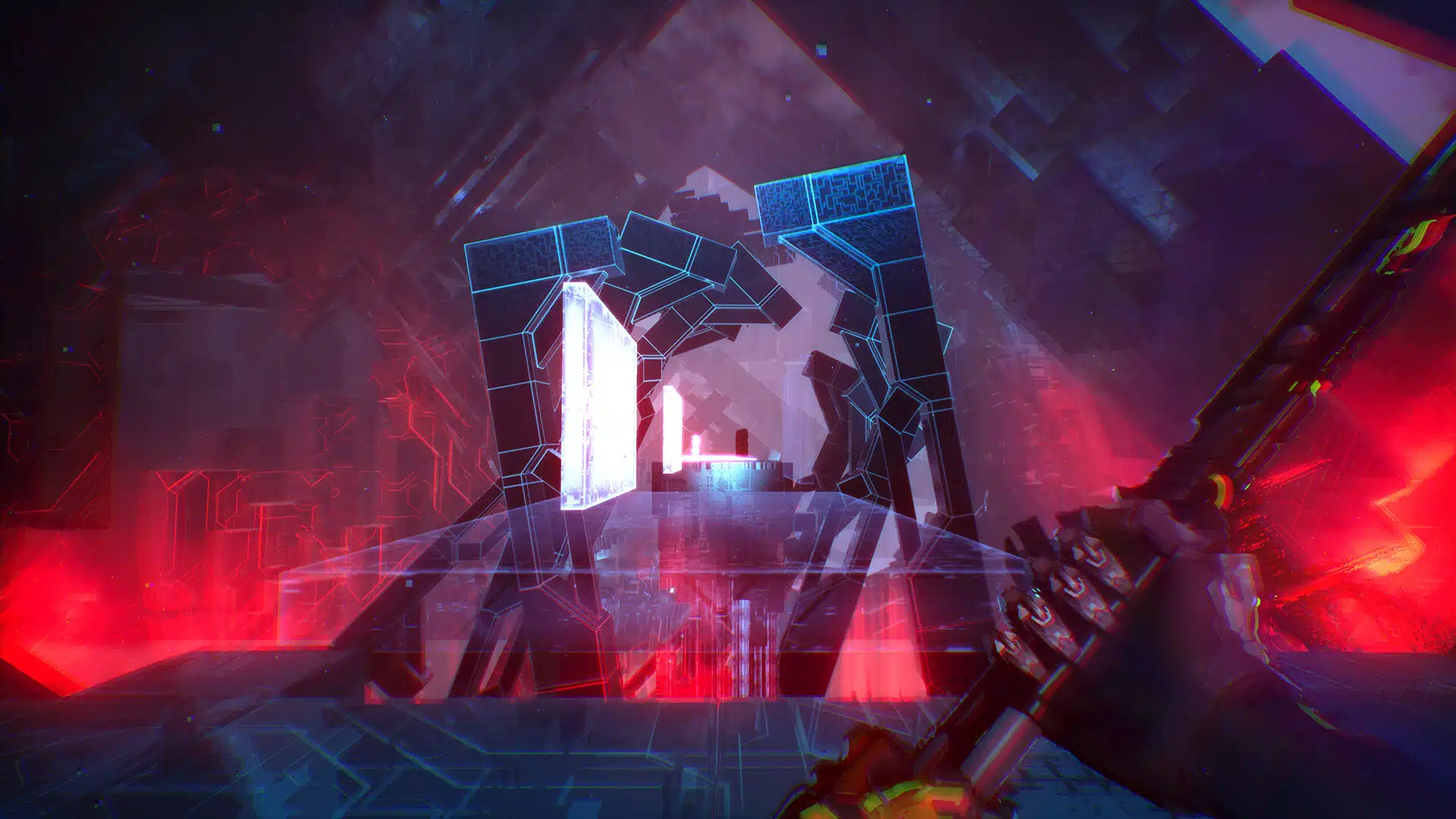
Use Your Skills Wisely
After playing through more of the game’s story campaign, you will unlock three very important additional skills and an ultimate attack that can be hit or miss. The first of these skills was the one I ended up using more than any other in the game, which was the Shuriken ability. This not only helps with traversal as mentioned previously, but also can be very deadly in battle as well. Depending on the enemy you are facing, you can throw a shuriken at it to immediately kill it in one hit or usually at least stun it to allow you to move in and take it out. It can also be used to target explosive barrels and protective barriers, so it is very versatile.
You also gain access to the Shadow and Tempest abilities, though I ended up using them mostly only when necessary compared to the shuriken. Shadow allows you to cloak yourself and make a copy from where you are standing when activating it. This was required in a few areas, but I never found it as useful in combat. Tempest is essentially the Force push ability from Star Wars, which mostly was used for pushing objects rather than enemies in my playthrough. What I really enjoyed here though was I was able to tailor my experience to the skill that I liked best, while others could easily find one of the other two skills much more useful and go that route instead.
There are also a few different Ultimate abilities that you can choose between and equip, with more becoming available later in the game, including one that lets you create an energy beam that takes down numerous enemies at once and another that lets you slow down time. These are activated by pressing the right analog stick, which actually got kind of frustrating at times due to how many times I accidentally activated it due to the fast-paced nature of the game’s traversal and combat. Each of the Ultimate abilities also has three levels of Boosters that you can access via the game’s Motherboard system.
Ghostrunner 2 has changed up the upgrade system from the first game by introducing the Motherboard. As you play through each level in the game, you will come across hidden purple Memory Shards that you can collect to gradually upgrade your Motherboard to allow for more memory. You will also come across a computer in the main hub and a few other areas that sell special chips that can then be equipped onto the Motherboard. These chips are split into different categories such as ones that involve your character speed, the amount of stamina used by shurikens, and even the aforementioned Ultimate Booster chips. This system is a little convoluted at first, but essentially there are different places where certain chips can be placed and the level you place them on the board affects how much memory it costs to place them. As a result, it will take some time to learn this system and how to best place chips.
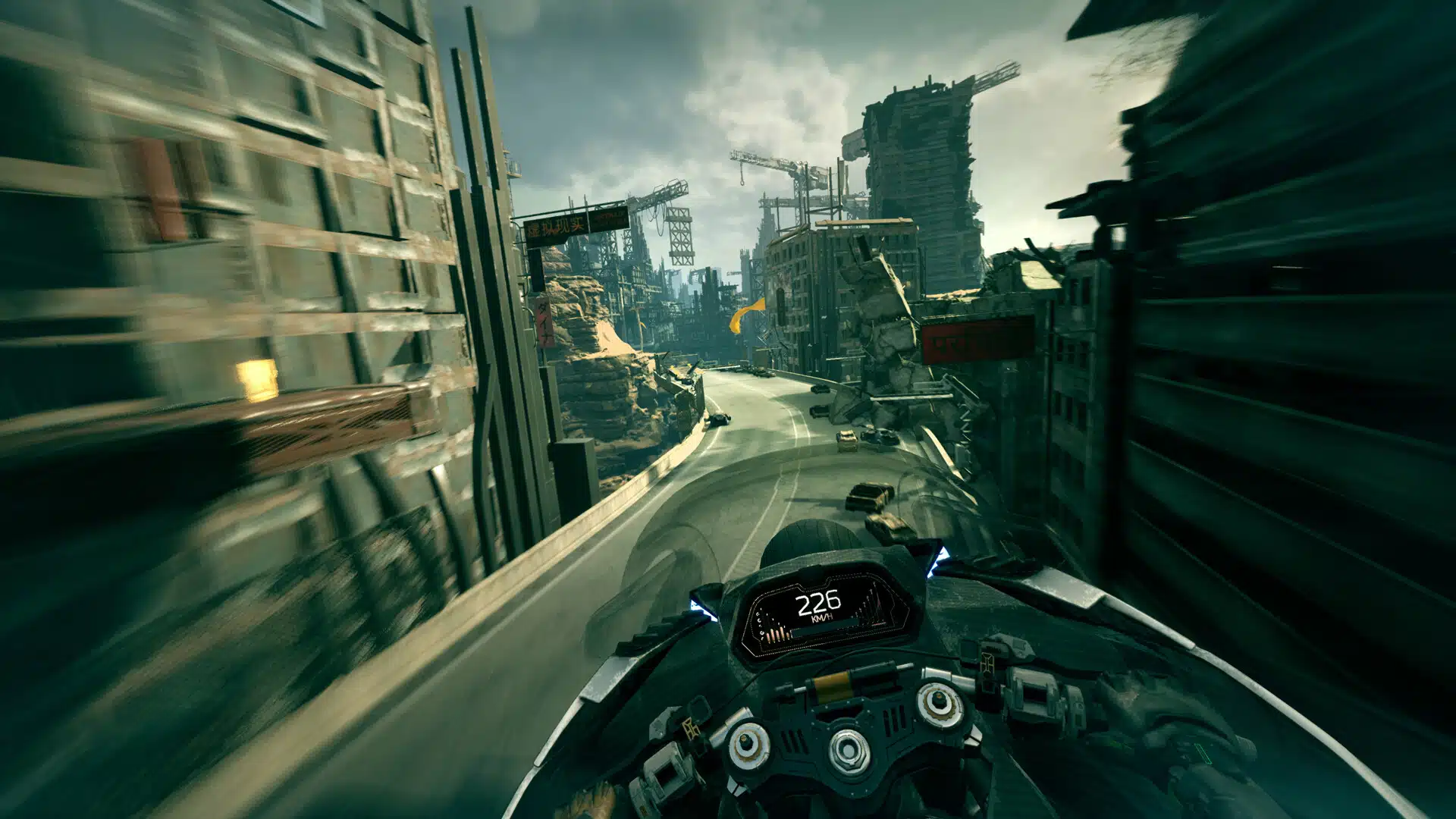
One of the greatest additions to Ghostrunner 2 is Jack’s new motorcycle as he makes his way outside of Dharma Tower. Featuring a completely different setting from the cyberpunk look of Dharma Tower, these locales feel much grander in scale as you drive between map markers to complete the corresponding quests. The motorcycle controls very well, including some very innovative sections where you have to launch yourself to avoid laser barriers that the motorcycle can drive through and then grappling back onto the motorcycle in stride. I almost wish we could have had more sections like this and easily would love to see a full game focused on this setting in the future.
The motorcycle is not just for driving either, as there are also sections of vehicular combat where you get infinite bullets to shoot at enemies or use your sword up close to slash enemy cyclists. These sections are rarely as hard as some of the first-person sections of the game, but I thoroughly enjoyed nearly every second of them. The pinnacle of this is when Jack has to avoid getting killed by a giant robotic sandworm named Naga that you eventually drive inside of and destroy. This entire sequence was exhilarating and was a great change of pace to keep the game fresh many hours into the experience.
Those completionists out there will also find a few different collectibles throughout the game as well. There are alternate skin colors for your sword, gloves, and motorcycle to be found, as well as random artifacts and audiologs that are scattered across the game. None of these are required, but it’s fulfilling to try alternate paths that you notice and then come across a collectible that you were not expecting.
Verdict
Ghostrunner 2 takes what was already a great game and takes things to the next level in the even-more-ambitious follow-up. The gameplay itself is largely the same as before, but now you have even more abilities like the shuriken that make the adrenaline-pumping combat even more satisfying upon surviving each battle. Traveling outside of Dharma Tower with the motorcycle was a refreshing change of pace that we really hope to see expanded upon even further in a hopeful sequel (or as part of its post-launch plans). Ghostrunner 2 is not only a fantastic follow-up to the original, but one that could easily be enjoyed by those who have never played the first one as well.
Score: 9/10
Pros:
- Still as difficult, but almost always fair
- Captivating enough story to keep you invested while playing
- Venturing outside Dharma Tower adds a grander scale to the game
- Motorcycle segments, especially against the sandworm, are very exciting
Cons:
- Some players may find the game’s difficulty too much to overcome with no difficulty options
- Final boss parry timing change was unwelcome
- Poor button placement for Ultimate ability
Ghostrunner 2 review code was provided by the publisher. You can read MP1st’s review and scoring policy right here.
